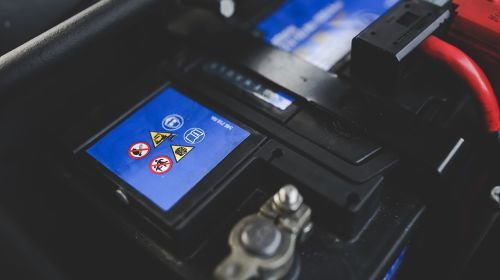
28/03/2018
Battery Packs, experience and know-how vital in case of fire
Dino Collazzo
"Thermal runaway" is the main issue with electric cars. According to the US Federal Agency NHTSA, batteries can ignite as a result of mechanical shocks, electrical or thermal problems. Recent cases show that the likelihood of this happening is very low and can be traced back to accidents. Here's how to prevent and manage them
"Thermal runaway" represents one of the main problems afflicting electric vehicles. It basically means that, inside a lithium-ion battery, a thermal imbalance of the system is created which causes an uncontrolled and unstoppable temperature rise starting a chain reaction that leads first to a combustion and in extreme cases to an explosion. Very exceptional cases, true, but enough for us to place the emphasis on the not often debated topic of safety, as well as the type of maintenance needed on electric vehicles.
However, before tackling this issue, it would be good to point out that electric vehicles are safe and the risk that these will suddenly explode while in use is basically minimal or non-existent. Over the years, however, there have been cases – very few indeed - in which battery-powered cars have caught fire. These events, which received more attention by the media than a real response by the market or industry, pressured the National highway traffic safety administration into embarking in a fire risk study related to lithium-ion batteries. The study isolated three main conditions responsible for initiating a thermal runaway: mechanical shocks, electrical problems, or short circuits caused by the use of poor materials or manufacturing processes, or an excessive discharge due to the rapture of a thin polyethylene separator between anode and cathode with consequent excessive heating of the battery. Of all three cases the most dangerous is the one connected to collisions. In fact, in the event of an accident, the extreme conditions needed to set a vehicle on fire are more likely to occur.
TV presenter and pilot Richard Hammond became fully aware of this last June on the set of the TV program The Grand Tour, when he had a serious accident with an electric hypercar. In that case, the swift intervention of fire-fighters prevented the worst from happening. Hammond managed to save himself while the car was completely destroyed in the fire. Managing events such as these require special measures, suitable equipment and timely actions, so as to avoid the risk that batteries might explode releasing toxic gases. To secure a burning electric car, fire-fighters must not only wear suitable protections but must immediately disconnect the battery. The latter must then be placed under observation via a thermal camera to ensure that there is no internal short circuit. Current manufacturers of electrically powered vehicles are perfectly aware of how delicate battery packs really are and how important it is to improve their resistance. For some time now, several car makers have been investing in new advanced materials that make it possible to produce sturdier parts so as to reduce the risk of cracking the battery pack in case of a collision. In addition, new technological developments in the automotive sector are leading to the creation of increasingly innovative batteries able to deliver greater Energy, greater safety, reduced recharging time and resistance to low temperatures. In this case, we are looking at a solid-state battery with glass electrolyte that American physicist John Goodenough, creator of the first rechargeable lithium-ion devices, is developing with a team from the University of Texas. If electric vehicles are to become a viable solution in the future, safety simply cannot be overlooked. A key role will also be played by car repairers who will be called upon to provide adequate assistance and maintenance albeit in a different manner compared to traditional combustion engines. And in doing so, they will have to work safely being fully aware of the risks associated with electric vehicles. Protective equipment, regular updates with specific training courses as well as tools and technical equipment fit to safely work with electricity such as electrician gloves, shoes with rubber sole, tools with insulated handles and glasses or visors to protect against sparks. Furthermore, a separate and well-defined area in which these vehicles can be repaired will also be needed.
However, before tackling this issue, it would be good to point out that electric vehicles are safe and the risk that these will suddenly explode while in use is basically minimal or non-existent. Over the years, however, there have been cases – very few indeed - in which battery-powered cars have caught fire. These events, which received more attention by the media than a real response by the market or industry, pressured the National highway traffic safety administration into embarking in a fire risk study related to lithium-ion batteries. The study isolated three main conditions responsible for initiating a thermal runaway: mechanical shocks, electrical problems, or short circuits caused by the use of poor materials or manufacturing processes, or an excessive discharge due to the rapture of a thin polyethylene separator between anode and cathode with consequent excessive heating of the battery. Of all three cases the most dangerous is the one connected to collisions. In fact, in the event of an accident, the extreme conditions needed to set a vehicle on fire are more likely to occur.
TV presenter and pilot Richard Hammond became fully aware of this last June on the set of the TV program The Grand Tour, when he had a serious accident with an electric hypercar. In that case, the swift intervention of fire-fighters prevented the worst from happening. Hammond managed to save himself while the car was completely destroyed in the fire. Managing events such as these require special measures, suitable equipment and timely actions, so as to avoid the risk that batteries might explode releasing toxic gases. To secure a burning electric car, fire-fighters must not only wear suitable protections but must immediately disconnect the battery. The latter must then be placed under observation via a thermal camera to ensure that there is no internal short circuit. Current manufacturers of electrically powered vehicles are perfectly aware of how delicate battery packs really are and how important it is to improve their resistance. For some time now, several car makers have been investing in new advanced materials that make it possible to produce sturdier parts so as to reduce the risk of cracking the battery pack in case of a collision. In addition, new technological developments in the automotive sector are leading to the creation of increasingly innovative batteries able to deliver greater Energy, greater safety, reduced recharging time and resistance to low temperatures. In this case, we are looking at a solid-state battery with glass electrolyte that American physicist John Goodenough, creator of the first rechargeable lithium-ion devices, is developing with a team from the University of Texas. If electric vehicles are to become a viable solution in the future, safety simply cannot be overlooked. A key role will also be played by car repairers who will be called upon to provide adequate assistance and maintenance albeit in a different manner compared to traditional combustion engines. And in doing so, they will have to work safely being fully aware of the risks associated with electric vehicles. Protective equipment, regular updates with specific training courses as well as tools and technical equipment fit to safely work with electricity such as electrician gloves, shoes with rubber sole, tools with insulated handles and glasses or visors to protect against sparks. Furthermore, a separate and well-defined area in which these vehicles can be repaired will also be needed.








